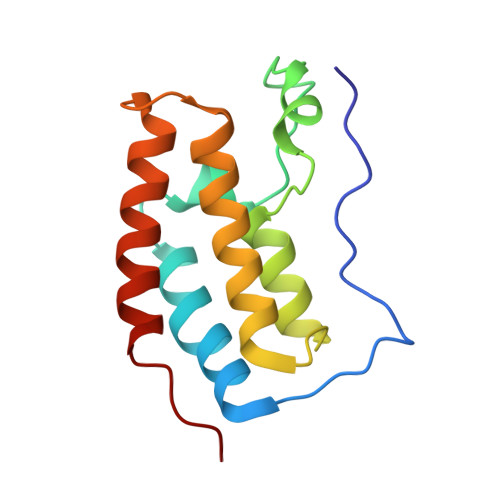A Chemical Probe for the ATAD2 Bromodomain.
Bamborough, P., Chung, C.W., Demont, E.H., Furze, R.C., Bannister, A.J., Che, K.H., Diallo, H., Douault, C., Grandi, P., Kouzarides, T., Michon, A.M., Mitchell, D.J., Prinjha, R.K., Rau, C., Robson, S., Sheppard, R.J., Upton, R., Watson, R.J.(2016) Angew Chem Int Ed Engl 55: 11382-11386
- PubMed: 27530368
- DOI: https://doi.org/10.1002/anie.201603928
- Primary Citation of Related Structures:
5LJ0, 5LJ1, 5LJ2 - PubMed Abstract:
ATAD2 is a cancer-associated protein whose bromodomain has been described as among the least druggable of that target class. Starting from a potent lead, permeability and selectivity were improved through a dual approach: 1) using CF2 as a sulfone bio-isostere to exploit the unique properties of fluorine, and 2) using 1,3-interactions to control the conformation of a piperidine ring. This resulted in the first reported low-nanomolar, selective and cell permeable chemical probe for ATAD2.
Organizational Affiliation:
GlaxoSmithKline, Gunnels Wood Road, Stevenage, SG1 2NY, UK. Paul.A.Bamborough@gsk.com.
















